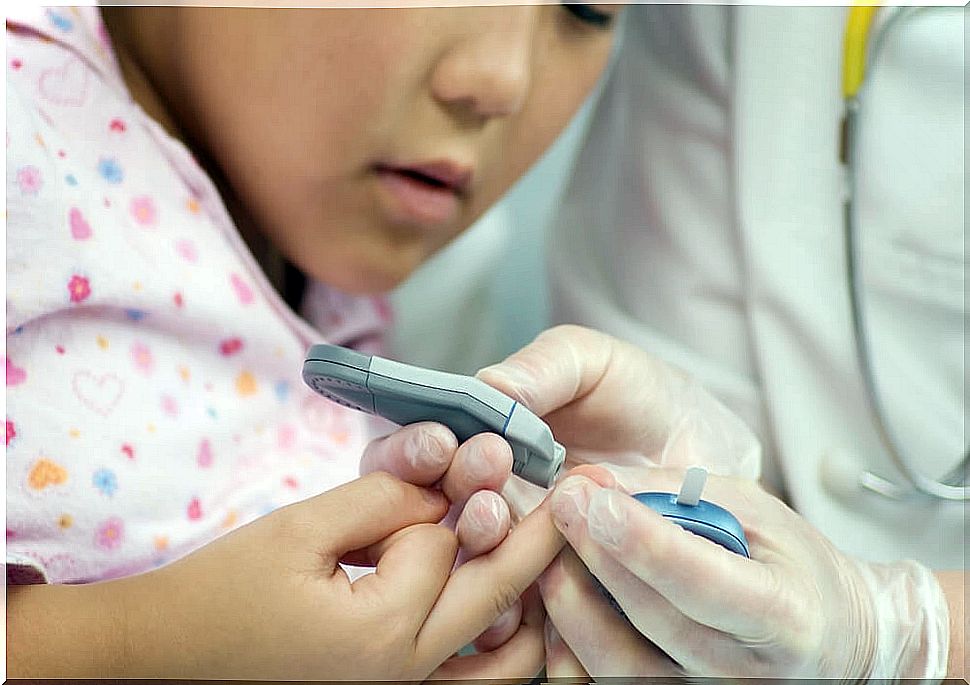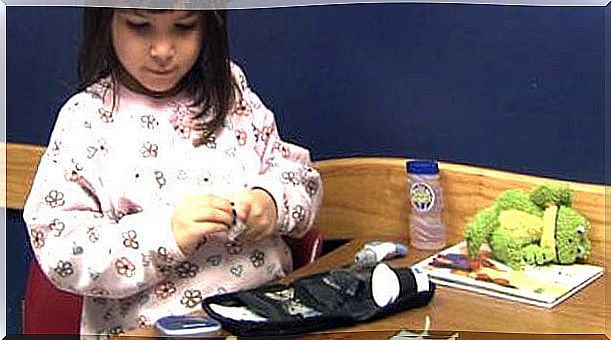Children With Diabetes, Some Care

In previous articles we have talked about diabetes in childhood. This time we will talk about the care that children with this condition should have. For all mothers of children with diabetes, these tips will be very helpful.
It is not about giving assistance advice that a priori handicaps the child and reduces their cognitive, social or affective development under the pretext that they are diabetic.
On the contrary, as Olga Sanz Font points out in her guide “My Son’s Diabetes” , parents, teachers and other family members should treat the child diagnosed with diabetes normally and not make him feel “special” or have exaggerated considerations with him since responsibility, awareness of their condition and the child’s proactive attitude towards diabetes will contribute to its control.
Diabetes, a disease caused by the body’s failure to produce the hormone insulin, is a chronic disease that generates glucose imbalances in the blood. It is not curable.
The World Health Organization (WHO) formula to prevent and control diabetes is:
Physical exercises + healthy eating = WELLNESS
Practical advice for mothers of children with diabetes
Control notebook or diary
It is recommended that parents and the child with diabetes keep a control of their daily activities in a notebook or diary, to measure aspects such as: blood insulin level, meal times, physical activities. Above all, keep in this notebook a record of the days on which a highly favorable or unfavorable event for the child’s health occurred.
Independence and responsibility for your health
Give your child independence, hold him accountable for his treatment, and celebrate progress in his health together. Psychologists recommend that the child take control of his blood sugar levels, insulin application and food controls gradually from 8 years of age.

Meal times for children with diabetes
The person with diabetes must eat regularly to avoid episodes of hypoglycemia or hyperglycemia that could lead to health complications. Pediatric diabetes specialists recommend consuming 5 to 6 meals a day and administering insulin after eating a balanced plate that contains the necessary nutrients.
The consumption of 1000 Kcal / day is recommended in children. However, only the doctor is the one who can precisely determine the diet that the child should follow according to their height, weight, physical activity, to keep their glucose levels under control. The intake of carbohydrates and proteins is essential.
More vegetables and fruits. Zero sweets
Vegetables (green and orange) are your child’s great allies, just like fruits. Teach him to prefer a fruit salad over a piece of cake or other high-sugar food. Prepare dishes at home with creativity: fruit meringues that replace soft drinks and always have these “allies” in your snack.
Sweets are temptations that the child could fall into, however, make him aware of the risks involved.
Reduce the consumption of saturated fat
The whole family can benefit from a balanced diet for a child with diabetes. In general, it is about consuming healthy food and on time. As a mother, she chooses steaming, iron, and oven cooking modes and reduces her intake of saturated fat at home.
Select lean meats, olive oils, fish rich in Omega-3 fatty acids.

Physical activities
The child with diabetes can, and is obliged, to do physical activities like any child his age. Making exercise a habit will pay off in the long run. Look at this list of activities you could do: swimming, cycling, running, soccer, and other activities that require additional physical effort are recommended. However, before signing it up for an activity, check with your pediatrician.
Prevent children with diabetes from ingesting:
- Candy, honey artificial sweeteners
- Special products for diabetics as they mentally condition the child and some contain fats and sugars.
- Fatty or aged cheeses
- Sausages and charcuterie
- Animal fats, lard, butter
- Sodas
- Large amounts of food.
Always have in the home fridge with:
- Fruit
- Vegetables
- Vegetables
- Lean meats
- Nuts
- Whole grain breads and cookies
- Skim milk, fresh cheeses or spreads
- Sugar-free ponques or cakes









